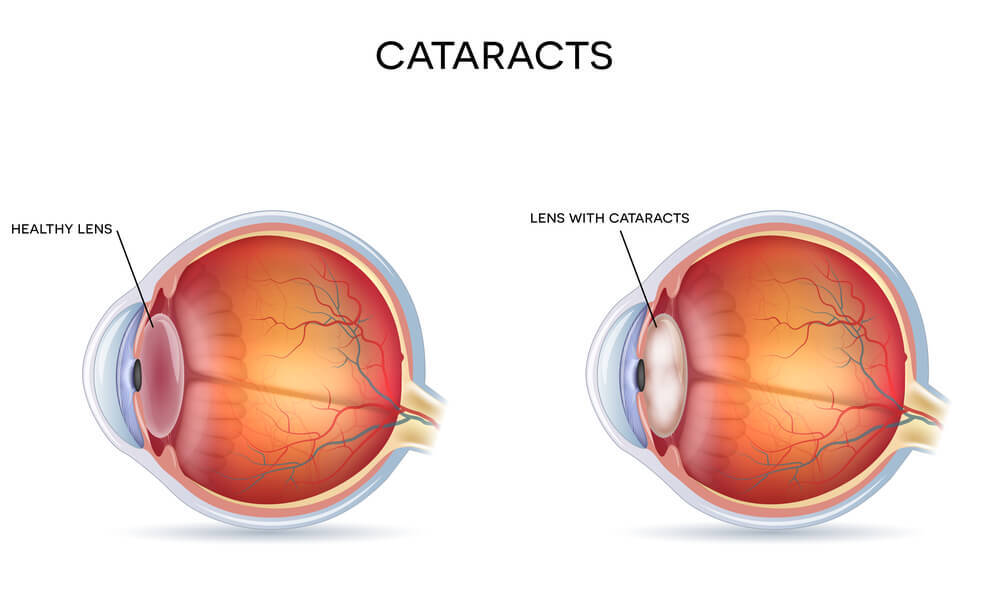Are you experiencing vision problems due to cataracts? Do you want to reclaim your eyesight and get the opportunity to enjoy clearer vision?
You may be a good candidate for cataract surgery. However, even if you’ve been diagnosed with cataracts, that doesn’t always mean you need cataract surgery right away.
Keep reading to learn more about how to know if you need cataract surgery.
What are Cataracts?

When light enters the eye, the natural lens focuses rays onto the retina, sending clear images to your brain. Cataracts are clumps of protein that form on this lens, clouding your vision and making it difficult to see.
The most common cause of cataracts is aging, as the proteins within the natural lens start to break down over time. Although it is much rarer, younger patients can get cataracts as well.
What are the Common Symptoms of Cataracts?
Even if you have cataracts, you may not be able to tell right away. They often develop slowly over many years and do not cause symptoms for a long time.
Once your cataracts develop further, it can feel like looking through a foggy or dirty window. You may experience symptoms including:
- Blurry, cloudy vision
- Poor night vision
- Light sensitivity
- Needing to change your prescription more frequently
- Halos and glare around lights
- Difficulty reading in low light
- Double vision
- Colors looking faded, yellowed, or duller
While these symptoms are common in patients with cataracts, they could indicate other eye conditions such as glaucoma, age-related macular degeneration, or diabetic retinopathy. To get an official diagnosis and comprehensive treatment plan, you should schedule an eye exam with your eye doctor at South Texas Eye Institute.
What is Cataract Surgery?
Cataract surgery is the only treatment that can restore vision by removing your cataracts. Millions of cataract surgery procedures are performed every year to help patients achieve clearer eyesight.
The procedure itself is quick and minimally invasive, taking around 10-15 minutes. It involves removing the natural lens of the eye that has been clouded by cataracts, and replacing it with an intraocular lens, or IOL.
Your eyes will be numbed for the entirety of the procedure to ensure you are comfortable. Recovery is also straightforward, with many patients being able to return to work and other activities within 1-3 days after cataract surgery.
While full recovery can take about four to six weeks, most patients experience vision improvements in the first few days following the procedure.
When Should You Consider Cataract Surgery?

At first, glasses and contacts with a higher prescription may be enough to maintain your vision with cataracts. Some patients choose refractive lens exchange (RLE) at this stage for the purpose of vision correction and the prevention of cataract development.
However, once your cataracts reach the point that they begin interfering with your ability to live your life, you should consider cataract surgery. Cataracts can significantly reduce your independence, requiring you to rely on others to read, drive, or navigate when your cloudy vision can’t.
You may also find you’re socially isolating yourself due to vision problems, which can negatively impact your quality of life. The things that were once your favorite hobbies, like tennis, traveling, or birdwatching, may not be possible due to your symptoms.
Luckily, cataract surgery can help you get back to doing the things you love with independence and accuracy.
What are the Benefits of Cataract Surgery?
The biggest benefit of cataract surgery is that you won’t need to deal with the frustrating symptoms of cataracts anymore. Blurry and yellowed vision will become things of the past, allowing you to enjoy the vibrancy of the world around you.
You also won’t have to worry about cataracts coming back, thanks to your new IOL. Because it is an artificial lens, it cannot develop the clumps of protein that form cataracts.
Depending on the IOL you choose, you may even achieve greater visual freedom than you had before developing cataracts. Before your procedure, your eye doctor will conduct a consultation with you to determine your candidacy and select the IOL that best fits your budget, lifestyle, and vision needs.
The IOLs offered at South Texas Eye Institute Include:
Monofocal Lenses
Monofocal Lenses are the standard IOLs used for cataract surgery. They can correct vision at one distance, meaning you will likely need visual aids to see at other distances.
This is a good option for patients who don’t mind wearing glasses or contacts or patients who are on a budget, as the monofocal lens is typically covered by insurance or Medicaid.
Multifocal Lenses

Multifocal lenses are premium IOLs that split light to correct vision at multiple distances. They offer patients greater freedom from glasses and contacts, with clearer eyesight across more distances.
Extended Depth of Focus Lenses
Extended depth of focus (EDOF) lenses are premium IOLS that provide clearer vision across a wider range of distances and allow for an easier transition between powers. They prioritize high-quality vision in all environments by preventing visual aberrations like color distortion.
South Texas Eye Institute features the Symfony EDOF lens as an excellent way to improve your vision and reduce your reliance on visual aids post-cataract surgery.
Accommodating Lenses
Accommodating lenses are unique premium IOLs built with hinges to increase the flexibility of the lens. It is made to mimic the natural lens and respond to movements within the eye.
The Crystalens accommodating IOL is offered at South Texas Eye Institute to provide improved near, far, and intermediate sight with greater flexibility.
Toric Lenses
Toric lenses are premium IOLs specifically made to correct astigmatism. South Texas Eye Institute also offers toric/multifocal combination lenses and the Trulign toric/accommodative combination lens that offer the benefits of both astigmatism correction and greater visual freedom.
No matter which IOL you choose, cataract surgery can significantly improve your life by eliminating cataract symptoms and restoring your independence as well as your eyesight. With clearer vision, you can enjoy all of life’s beautiful moments, like baking cookies with your grandkids, playing golf on a sunny day, or watching reruns of your favorite show with greater visual clarity.
Are you ready to find out if it’s time for you to have cataract surgery? Schedule an appointment at South Texas Eye Institute in San Antonio, TX, today!

